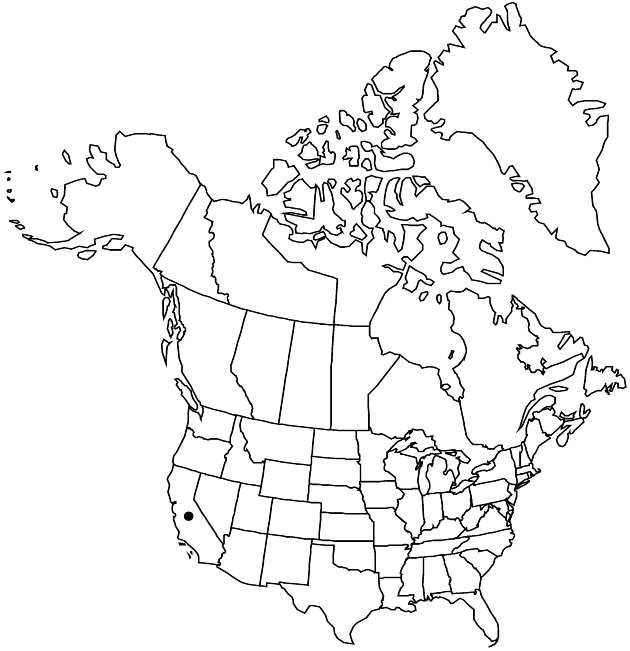Harmonia guggolziorum
Madroño 48: 293, figs. 1, 2. 2002.
Plants 10–30 cm; proximal unbranched portions of primary-stems usually longer than branches supporting heads. Leaves mostly on primary-stems (distal leaves of primary-stems not congested) and immediately proximal to branches supporting heads. Heads usually erect in bud and fruit. Phyllaries 3–6, hirsute and/or hirtellous near folded edges. Ray-florets 3–6; corolla laminae 4–5 mm. Disc-florets 8–13, some or all bisexual, fertile. Ray cypselae not gibbous, beakless; pappi to 0.5 mm. Disc cypselae 3–3.5 mm; pappi of 9–11 lanceolate to linear, fimbriate scales 0.6–0.8 mm. 2n = 18.
Phenology: Flowering Apr–May.
Habitat: Serpentine slopes
Elevation: 100–200 m
Discussion
Of conservation concern.
Harmonia guggolziorum occurs in the southern Inner North Coast Ranges. Molecular phylogenetic analyses have indicated a sister-group relationship between H. guggolziorum and the other serpentine-endemic species of Harmonia (H. doris-nilesiae, H. hallii, and H. stebbinsii; B. G. Baldwin 2001).
Selected References
None.
